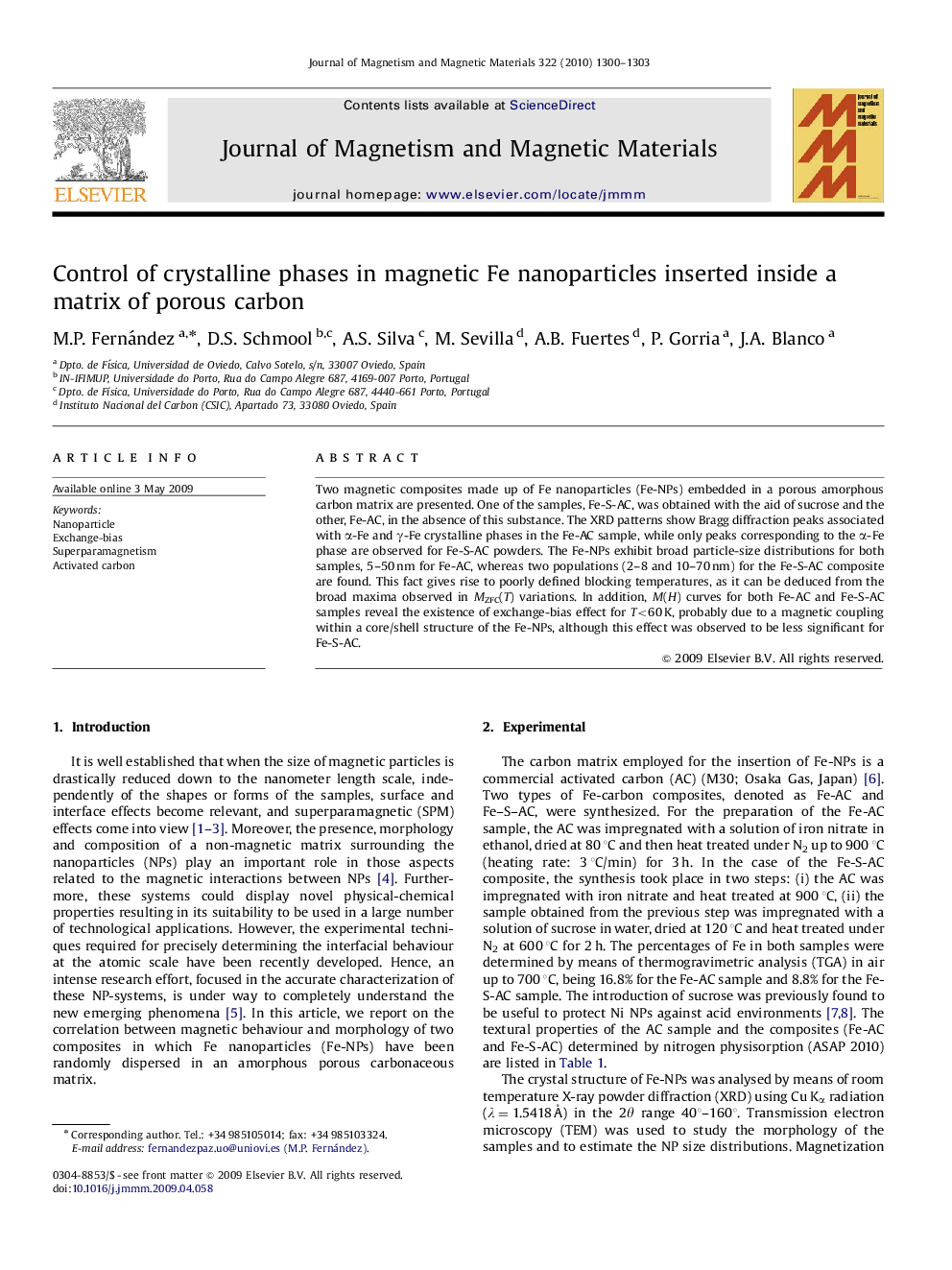| Article ID | Journal | Published Year | Pages | File Type |
|---|---|---|---|---|
| 1801427 | Journal of Magnetism and Magnetic Materials | 2010 | 4 Pages |
Two magnetic composites made up of Fe nanoparticles (Fe-NPs) embedded in a porous amorphous carbon matrix are presented. One of the samples, Fe-S-AC, was obtained with the aid of sucrose and the other, Fe-AC, in the absence of this substance. The XRD patterns show Bragg diffraction peaks associated with α-Fe and γ-Fe crystalline phases in the Fe-AC sample, while only peaks corresponding to the α-Fe phase are observed for Fe-S-AC powders. The Fe-NPs exhibit broad particle-size distributions for both samples, 5–50 nm for Fe-AC, whereas two populations (2–8 and 10–70 nm) for the Fe-S-AC composite are found. This fact gives rise to poorly defined blocking temperatures, as it can be deduced from the broad maxima observed in MZFC(T) variations. In addition, M(H) curves for both Fe-AC and Fe-S-AC samples reveal the existence of exchange-bias effect for T<60 K, probably due to a magnetic coupling within a core/shell structure of the Fe-NPs, although this effect was observed to be less significant for Fe-S-AC.
